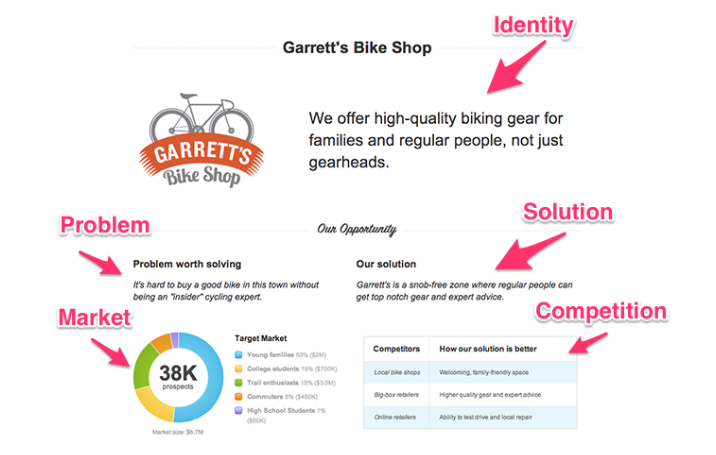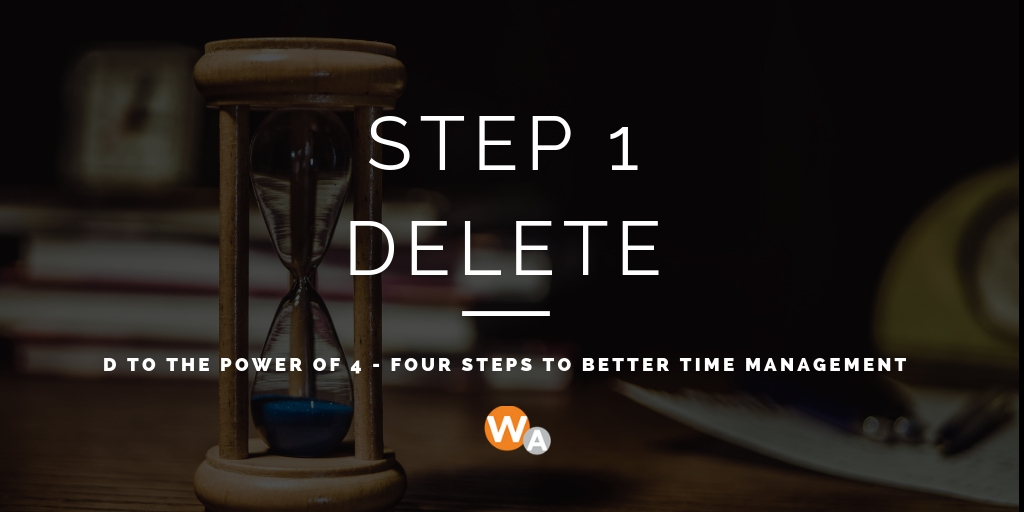This article is part of our series on Lean Planning, where we will go into more detail on aspects of the Lean Planning process. For a comprehensive overview of Lean Planning, check out An Introduction to Lean Planning, and if you’re ready for part 2, read Lean Planning Step 2: Develop Your Business Tactics.
What’s your business strategy? Success hinges on this key question, so you need to know the answer.
Tim Berry, founder of Palo Alto Software and one of my mentors, always says, “Strategy is focus. A good strategy is all about the opportunities that you decide not to pursue.”
This has been great advice for me over the years. I’m always deluged with new—and seemingly good—ideas for things that we could do to grow the company. There are always new potential partnership opportunities, new feature ideas, and new marketing concepts to try.
But, not all shiny new ideas are ones that should be implemented. And, with limited resources, you can only do so much. I’ve found that having a growth strategy for the business, and following it until it’s proven to be a bad strategy, has been critical to our growth.
How do you develop a business strategy?
So, having a strategy is important, but how do you develop it? At its core, business strategy is not as complicated as it sounds. It’s really just a fancy way of defining what your business does and how it does it.
But, while the mechanics of business strategy are not that complicated, getting your strategy right can mean the difference between success and failure.
Unfortunately, too many businesses get started without really knowing if they’ve got the right strategy. Some businesses get lucky and hit on a successful strategy right away, but the majority of business don’t get it right on the first try, which leads to wasted time, money, and potentially business failure.
To help solve this problem, we’ve developed Lean Planning. Lean Planning is a process that helps you develop a better, smarter business—all while reducing your risk and increasing your chances of success.
You can read more about the entire Lean Planning process here if you want more background and an overview of how to use this methodology in your own business.
The first step in Lean Planning is to develop your business strategy, and that’s what I’ll go into today.
Building your business strategy:
Your business strategy is what you’re going to do, in simple, easy-to-understand statements. Build your strategy with five key components:
1. Business identity: Who are you and what do you do?
Your identity is your key value proposition to your customers. Your identity should be no more than one sentence and simply declare the value that you provide.
For an example bike shop, their identity is, “We offer high-quality bike gear for families and regular people, not just gearheads.”
2. Problem: What problem are you solving for your customers?
You should be able to define the problem you are solving in one or two sentences or in a few bullets.
For our bike shop example, here’s the problem they’re solving: “Most bike shops in this town are focused on racing and high-end enthusiasts. There’s no good option for affordable bikes for commuters and families.”
3. Solution: How are you solving the problem you’ve identified?
This is essentially a brief description of your product or service.
Our bike shop’s solution: “We sell affordable bikes to families and bike commuters, all without the attitude of the higher-end bike shops.”
4. Market: Who is your customer? Are you targeting multiple market segments?
Describe your ideal customer in a few bullets. You may want to think about the size of each of your market segments at this stage to make sure you have enough potential customers to build a sustainable business. In-depth market research isn’t always necessary, but you do want to have a good sense of who your target customers are.
For our bike shop example, they might target families, college students, and bike commuters.
5. Competition: Who is your competition and how are you different?
Just list your top competitors and a brief sentence or phrase about how you are different or better.
 In LivePlan, you can build your strategy using the Pitch feature (see above). It creates the format for your strategy, walks you through each step, and presents it as an easy-to-read infographic. You can also download our free business pitch template and develop your strategy on your own.
In LivePlan, you can build your strategy using the Pitch feature (see above). It creates the format for your strategy, walks you through each step, and presents it as an easy-to-read infographic. You can also download our free business pitch template and develop your strategy on your own.
At this stage, when you write down your strategy, you’re just writing down your best guesses. You’re guessing that your target market has the problem you assume they have and that they’re going to be interested in your solution.
Will your business strategy work?
Now that you’ve written down your assumptions, you need to find out if you’re on the right track. You’ll do this before you even think about spending money growing your business. This will reduce your risk and help ensure that your business is going to be a success.
After all, your assumptions might be wrong, so now’s the ideal time to figure this out and make changes to your business strategy if necessary. It’s a lot cheaper and easier to make changes this early in the process than to try and make changes once your business is up and running.
To figure out if you’re on the right track with your business strategy, go out and talk to people in your target market:
- Interview them and find out if they actually have the problem that you think they have.
- Find out if they like your solution.
- Try and figure out what they think your solution is worth—what are they willing to pay for your products and services?
You’ll use all of this information in the next step in the Lean Planning process: developing your business tactics. Your strategy outlines what you’re going to do; your tactics will outline how you’re going to do it.
I’ll cover developing your business tactics in a future post. In the meantime, if you have any questions about the Lean Planning process and how you can take advantage of it, let me know in the comments below.




